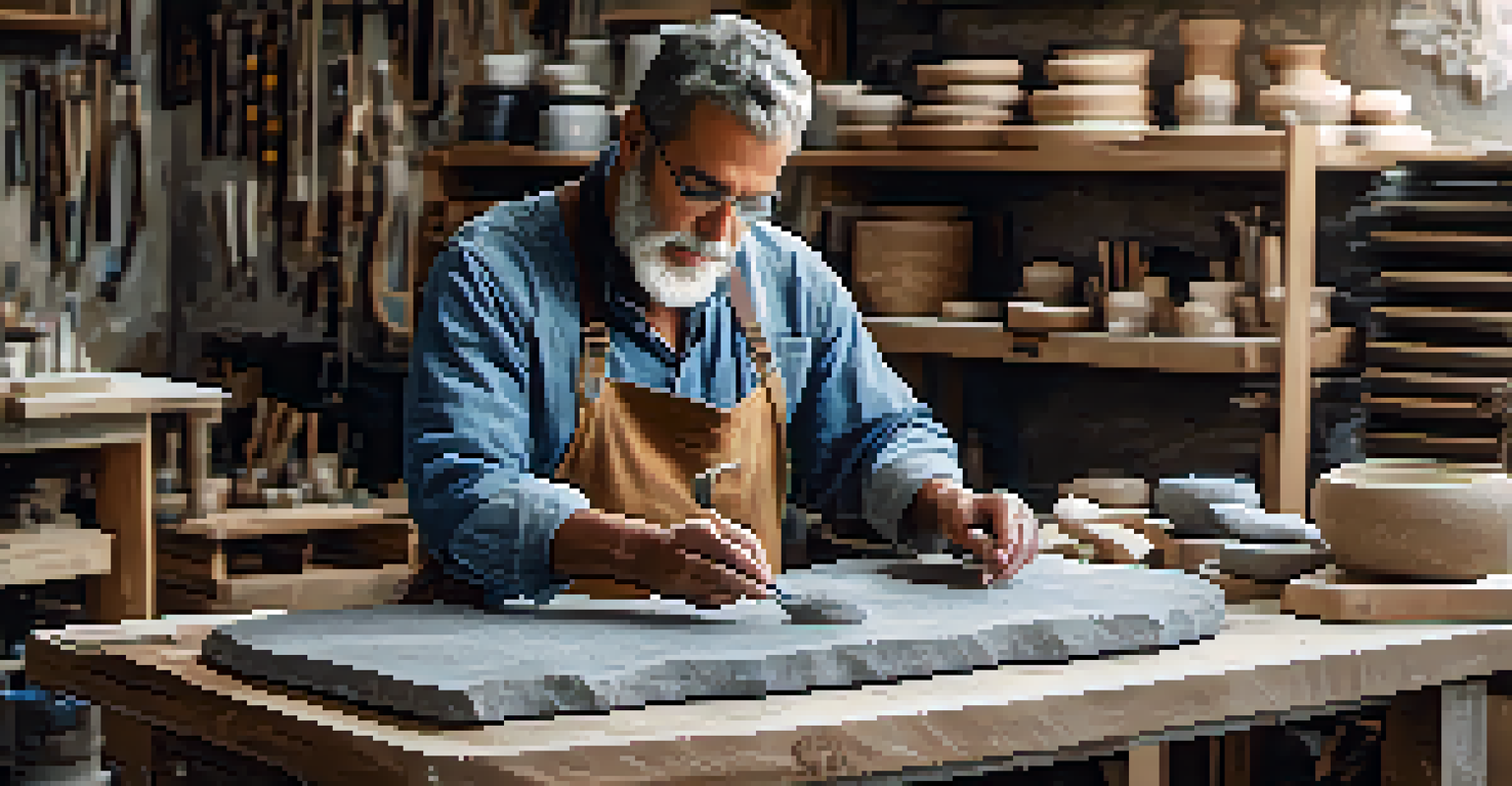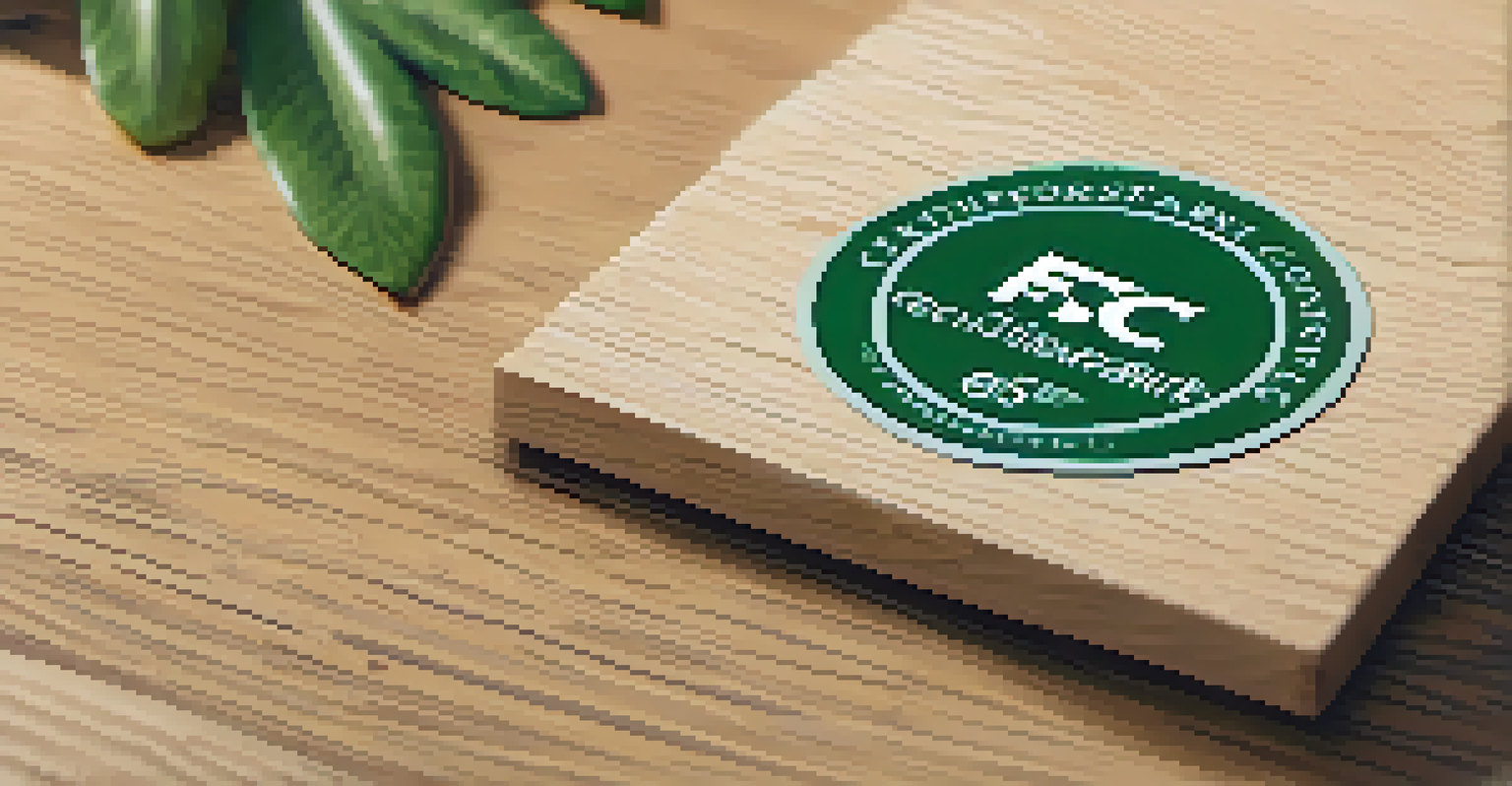The Role of Certifications in Sustainable Carving Materials

What Are Sustainable Carving Materials?
Sustainable carving materials are sourced in ways that do not deplete resources or harm the environment. These materials often come from renewable sources, such as responsibly managed forests or recycled products. By prioritizing sustainability, artisans contribute to the health of the planet while creating beautiful pieces.
The greatest threat to our planet is the belief that someone else will save it.
Think of sustainable carving materials as the eco-friendly choices in the art world. Just as you might choose organic produce for your meals, selecting sustainably sourced materials ensures that your craft has a minimal environmental impact. This choice not only benefits nature but also resonates with consumers who value sustainability.
The rise of eco-consciousness among consumers has made sustainable carving materials more popular. Artists and artisans can appeal to this audience by showcasing their commitment to using materials that support environmental stewardship, enhancing both their brand and the overall impact of their work.
The Importance of Certifications for Sustainability
Certifications play a crucial role in verifying the sustainability of carving materials. They act as badges of trust, indicating that a product meets specific environmental standards. For example, the Forest Stewardship Council (FSC) certification ensures that wood products come from responsibly managed forests.

When consumers see certified materials, they can feel confident that their choices are making a positive impact. It’s similar to how a fair-trade label on coffee reassures buyers about ethical sourcing. Certifications help bridge the gap between artisan craftsmanship and consumer responsibility.
Sustainable Materials Matter
Choosing sustainable carving materials helps artisans reduce environmental impact and appeal to eco-conscious consumers.
Moreover, certifications encourage manufacturers to adopt sustainable practices. The desire for certification can drive companies to improve their processes, reducing waste, and promoting the use of eco-friendly materials. This collective effort can lead to significant advancements in the industry.
Popular Certifications for Carving Materials
Several certifications are widely recognized in the realm of sustainable carving materials. Besides FSC, other notable certifications include the Programme for the Endorsement of Forest Certification (PEFC) and the Rainforest Alliance. Each of these certifications has its criteria and focuses, ensuring a broad range of sustainable options.
Sustainability is not a destination, it is a journey.
These certifications can apply to various materials—wood, stone, and even synthetic options. For instance, some synthetic materials are produced from recycled sources, and certifications can ensure their sustainability. This variety enables artisans to choose from a diverse palette while remaining eco-conscious.
Understanding these certifications empowers artists to make informed choices. When they select certified materials, they can not only enhance the quality of their work but also contribute positively to the environment, creating beautiful pieces that reflect their values.
How Certifications Impact Consumer Choices
For consumers, certifications provide a straightforward way to make eco-friendly choices. When shopping for carved items, seeing a certification label can significantly influence their purchasing decisions. It reassures them that the product aligns with their values regarding sustainability and ethical sourcing.
Imagine walking into a store where each product is marked with a certification badge. This visual cue simplifies the decision-making process, allowing consumers to select items that support their commitment to environmental responsibility without extensive research. It’s like having a reliable friend guide you through the options.
Certifications Build Trust
Certifications like FSC and PEFC assure consumers that materials are sourced responsibly, enhancing market appeal.
In today’s marketplace, where consumers are increasingly aware of their environmental impact, certifications can set products apart. Businesses that prioritize certified materials can attract more customers who are willing to pay a premium for sustainable goods, enhancing their market presence.
The Challenges of Obtaining Certifications
While certifications are beneficial, obtaining them can be a daunting process for artisans and manufacturers. The requirements can be stringent and time-consuming, often requiring thorough documentation and compliance with specific practices. This can be especially challenging for smaller businesses with limited resources.
However, the investment in certification can pay off in the long run. By committing to sustainable practices and obtaining certifications, businesses can improve their reputation and appeal to a growing market of eco-conscious consumers. It’s akin to taking a difficult exam—though challenging, the reward of success is well worth the effort.
Additionally, the complexity of the certification process can sometimes deter artisans from pursuing it. Yet, awareness and support from industry organizations can demystify the journey, making it more accessible. As more artisans embrace certifications, the industry can collectively move toward a more sustainable future.
The Future of Certifications in Sustainable Carving
Looking ahead, the role of certifications in sustainable carving materials is likely to evolve. As consumer awareness continues to rise, we can expect more innovative certifications to emerge. These new standards may address additional concerns like carbon footprints and social equity in sourcing practices.
The future may also see increased collaboration among certifying bodies, artisans, and consumers. By working together, these groups can develop robust certifications that address the complexities of sustainability. Imagine a future where every carved piece is not only beautiful but also tells a story of ethical sourcing.
Challenges in Certification
While obtaining sustainability certifications can be challenging, the long-term benefits for businesses and the environment are significant.
Ultimately, the future of certifications will depend on the commitment of all stakeholders in the supply chain. As artisans and manufacturers prioritize sustainability and consumers demand transparency, the landscape of sustainable carving materials will continue to grow and thrive.
Conclusion: The Path Forward for Sustainable Carving
In conclusion, certifications play an essential role in promoting sustainability in carving materials. They provide a trusted framework for consumers and artisans alike, ensuring that the choices made are beneficial for the environment. By understanding and embracing these certifications, the carving community can work together to support a healthier planet.
As artists, the responsibility lies in selecting materials that align with sustainability values. Every carved piece has the potential to contribute to a greater cause, and certifications help guide those choices. Like a compass pointing toward true north, these certifications can lead the way toward a more sustainable and responsible crafting journey.

The path forward involves collaboration, education, and a commitment to eco-friendly practices. By prioritizing certified materials, the carving community not only enhances the beauty of their work but also helps create a legacy of sustainability that future generations can appreciate.